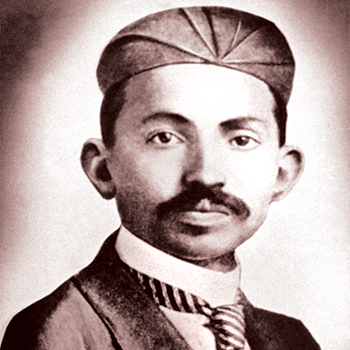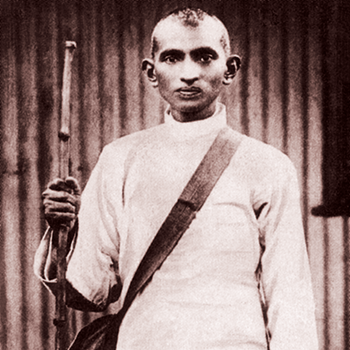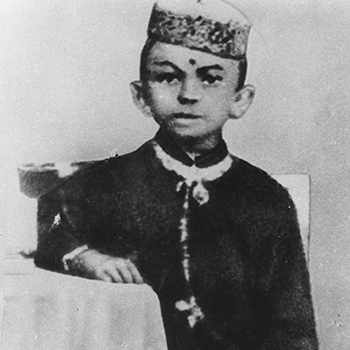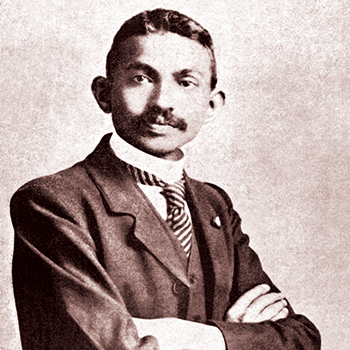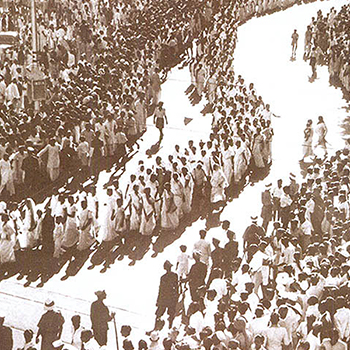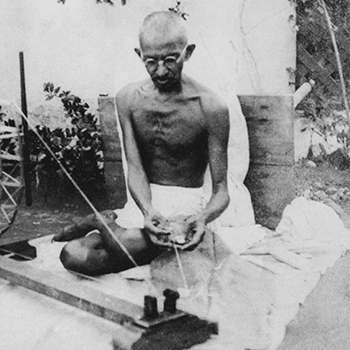
The Salt Satyagraha of Dandi was started by Mahatma Gandhi, from his Ashram in Sabarmati, Ahmedabad, Gujarat.

On March 12, at 6.30 in morning, thousands of people watched as Gandhi started from his Ashram with seventy eight volunteers on a march to Dandi, a village on a sea coast, 241 miles away. There it was announced, the salt law would be broken.

Gandhi prepared the worldwide media for the march by issuing regular statements from Sabarmati, at his regular prayer meetings and through direct contact with press.

Gandhi and 80 Satyagrahis, many of whom were from scheduled caste, set out on foot for the coastal village of Dandi, Gujarat.

The Salt March was also called the White Flowing River because all the people wore White Khadi.

When Gandhi broke the Salt law at 6.30 am, on 6 April 1930, it sparked large scale acts of civil disobedience against the British Raj salt laws by millions of Indians.

Mass Civil Disobedience spread throughout India as millions break the salt laws by making or buying illegal slat. It was sold illegaly all over the coast of India. A pinch of salt made by Gandhi himself sold for 1600 rupees(equivalent to $750 at the time) in reaction the British government arrested over sixty thousand people by the end of the month
What had begun as a Salt Satyagraha quickly grew into a mass Satyagraha.

Over 60,000 Indians were jailed along with Gandhi as a result of the Salt Satyagraha.








